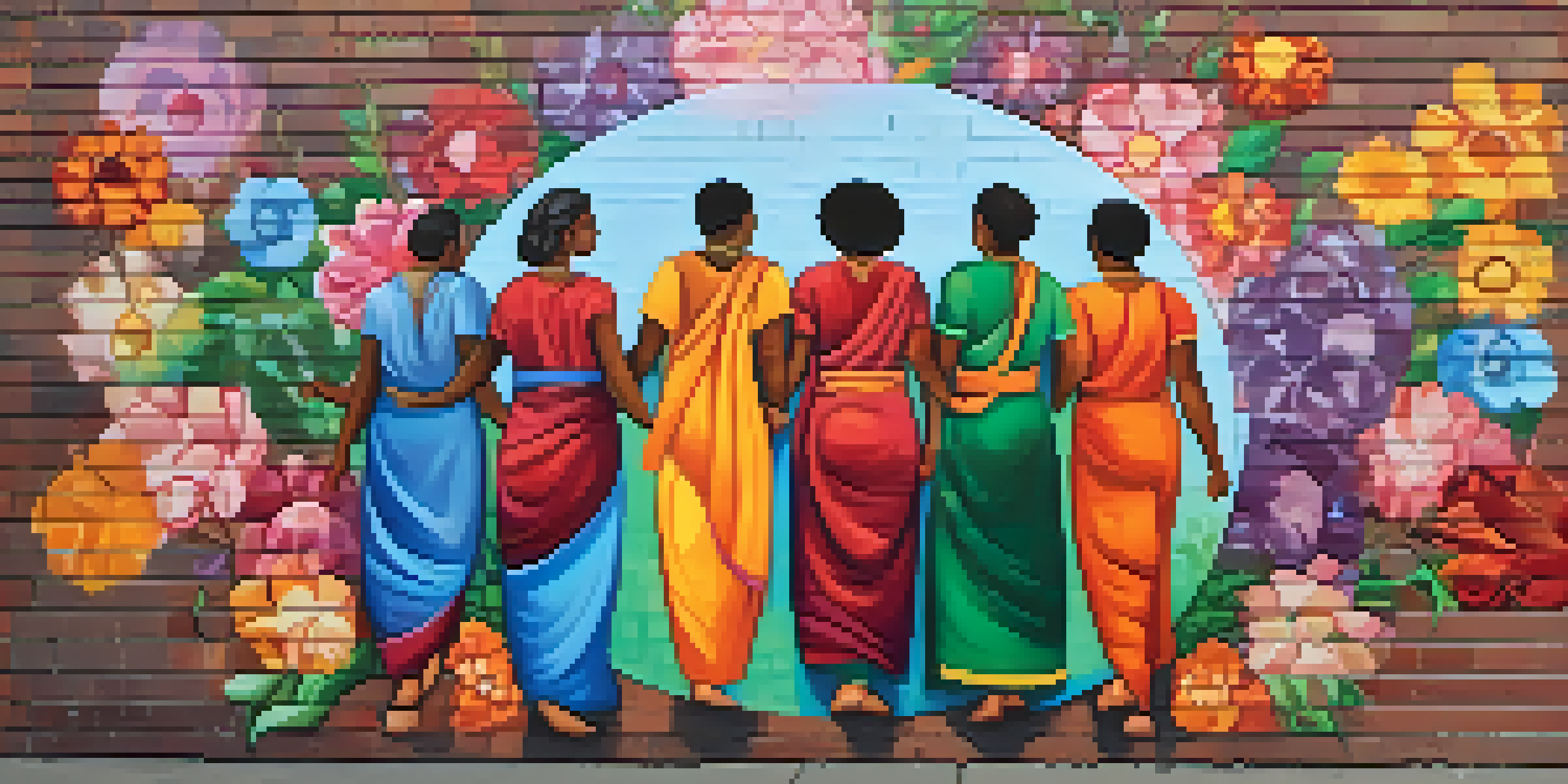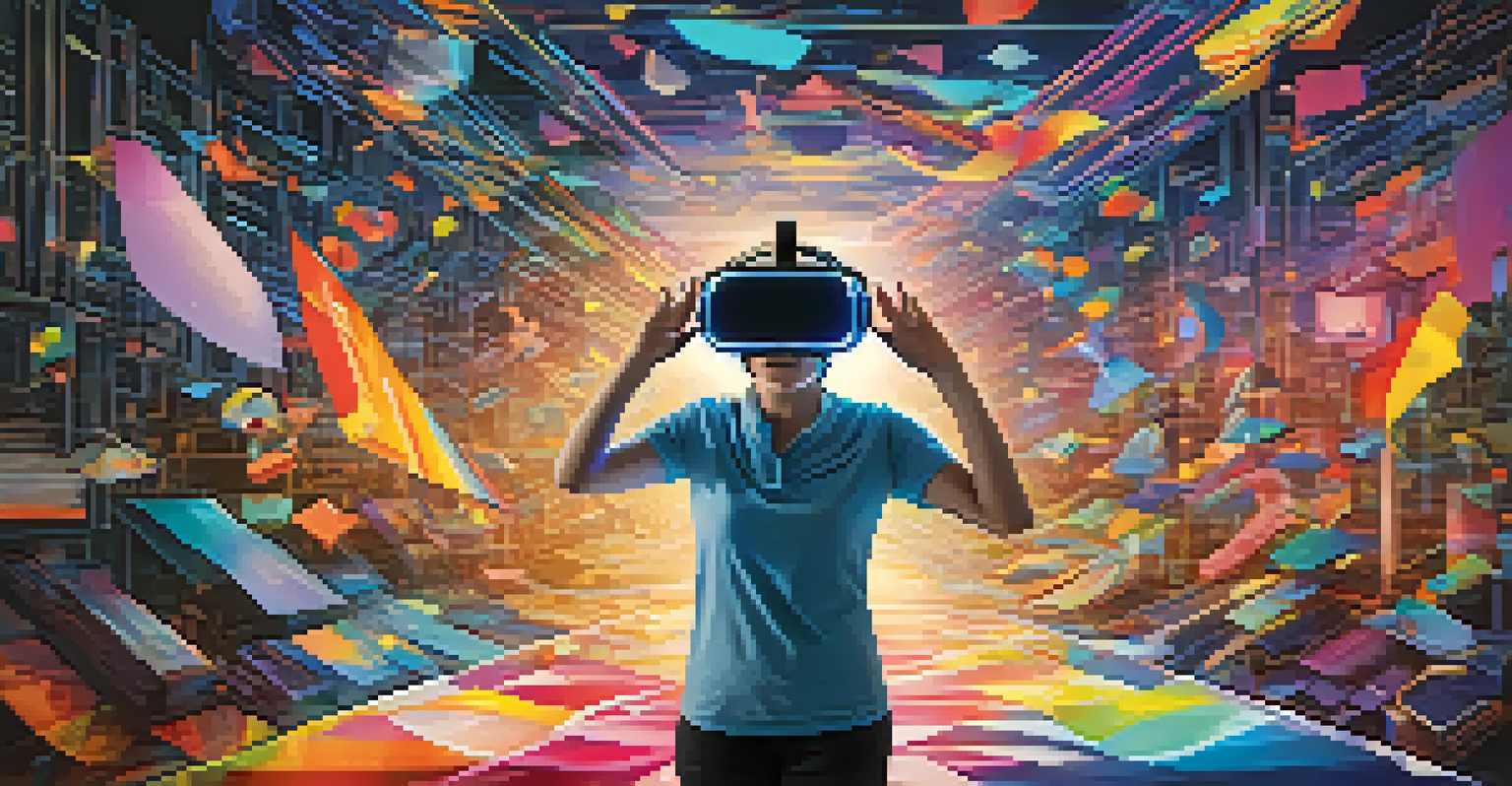Art and Activism: The Power of Digital Platforms

Understanding the Intersection of Art and Activism
Art and activism have long shared a powerful relationship, each amplifying the other's impact. When artists use their talents to address social issues, they can inspire change and provoke thought. This blend is especially potent in today’s world, where digital platforms allow for an unprecedented reach and engagement.
Art has the power to transform, to change minds and hearts, and to create a more just society.
Through visual art, music, literature, and performance, activists can convey complex messages in a relatable way. For instance, street art can turn public spaces into canvases for social commentary, challenging viewers to confront uncomfortable truths. Each piece of art becomes a conversation starter, inviting dialogue about pressing issues.
The rise of social media has transformed how art and activism intersect, allowing creators to share their work with global audiences instantly. This democratization of art means that anyone with a message can participate in the narrative, leading to a diverse array of voices contributing to social change.
Digital Platforms as Amplifiers of Artistic Voices
Digital platforms like Instagram, TikTok, and YouTube have revolutionized how artists share their activism. With just a smartphone, creators can showcase their work and connect with audiences, making art accessible to all. This democratization has empowered marginalized voices that might have otherwise gone unheard.

For example, viral campaigns like #BlackLivesMatter have utilized art to express urgency and solidarity, inspiring countless artists to contribute their perspectives. These platforms not only amplify the artwork but also foster community, encouraging collaboration between artists and activists around the world.
Art Amplifies Activism's Impact
The fusion of art and activism creates powerful messages that inspire change and provoke thought on social issues.
Moreover, the visual nature of these platforms allows for immediate emotional responses. A powerful image or video can resonate quickly, spreading awareness far beyond traditional media channels and inspiring action in ways that static art forms cannot.
Case Studies: Successful Art Activism Campaigns
Several notable campaigns have exemplified the power of art in activism, particularly through digital platforms. One such example is the 'Fearless Girl' statue, which became a symbol of female empowerment and gender equality. It sparked conversations worldwide, demonstrating how a single piece of art can catalyze global discourse.
The function of art is not a rarified, intellectual distillate; it is life, intensified, and the artist is a catalyst.
Another powerful case is the use of memes and social media graphics during election seasons or social justice movements. These bite-sized pieces of content can distill complex issues into easily digestible formats, making them shareable and relatable. Artists have harnessed this medium to mobilize support and engage younger audiences who may feel disconnected from traditional activism.
These examples illustrate that when art resonates with a cause, it can transcend its medium and become a rallying point for collective action. The fusion of creativity and activism amplifies messages in ways that resonate across cultures and demographics.
The Role of Community in Art and Activism
Community plays a vital role in the relationship between art and activism. Local artists often collaborate with grassroots organizations to address specific issues affecting their neighborhoods. This collaboration not only strengthens community ties but also ensures that the art produced is relevant and impactful.
Digital platforms also facilitate community building, allowing artists and activists to connect across geographic boundaries. Online forums, social media groups, and collaborative projects can foster a sense of belonging, enabling individuals to share resources and support each other's work. This creates a network of mutual aid and encouragement.
Digital Platforms Enhance Reach
Social media and digital tools empower artists to share their activism widely, engaging diverse audiences globally.
Through engaging with their communities, artists can better understand the issues that matter most to their audience. This understanding leads to more authentic and powerful expressions of activism, resonating deeply with those they aim to inspire.
Challenges Facing Art Activism in the Digital Age
Despite the opportunities presented by digital platforms, art activism faces significant challenges. The sheer volume of content online can dilute messages, making it difficult for important issues to stand out. In a world where attention spans are short, artists must find innovative ways to capture and maintain the audience's interest.
Additionally, there is the risk of 'slacktivism,' where individuals feel they have contributed to a cause simply by liking or sharing a post. This can lead to a false sense of accomplishment without any real-world impact. Artists and activists must work to encourage genuine engagement and action beyond the digital realm.
Finally, the commercialization of art can sometimes conflict with the integrity of activist messages. When art becomes a product for sale, it may lose its original intent, diluting the power of the message. Balancing artistic expression with commercial interests remains a complex challenge for many creators.
Engaging Diverse Audiences Through Art
One of the most compelling aspects of art activism is its ability to engage diverse audiences. Art, in its many forms, can transcend language barriers and cultural differences, inviting everyone to participate in critical conversations. This inclusivity is essential for building a broad coalition for change.
Digital platforms enable artists to reach audiences that might not engage with traditional activism. For instance, a visually stunning video or a thought-provoking graphic can capture the attention of those who might scroll past a written article. This visual storytelling approach allows for deeper emotional connections and wider reach.
Community Strengthens Artistic Voices
Local collaborations between artists and grassroots organizations ensure that art remains relevant and impactful within communities.
Moreover, by incorporating different artistic styles and cultural references, artists can resonate with various communities. This approach not only enriches the conversation but also fosters empathy and understanding among diverse groups, creating a more inclusive movement for social change.
The Future of Art and Activism in a Digital World
As technology continues to evolve, the relationship between art and activism is likely to grow even stronger. Emerging technologies, like virtual reality and augmented reality, present new opportunities for immersive storytelling that can engage audiences in unprecedented ways. Imagine experiencing a virtual gallery that immerses you in the struggles and triumphs of marginalized communities.
Furthermore, as digital platforms become more integrated into daily life, the potential for art to drive social change will only increase. Artists can leverage these tools to create compelling narratives that resonate with global audiences, promoting understanding and action on critical issues.

Ultimately, the future of art and activism hinges on the creativity and resilience of artists and activists. By embracing new technologies and fostering community engagement, they can continue to inspire change and challenge the status quo in ways we have yet to fully realize.